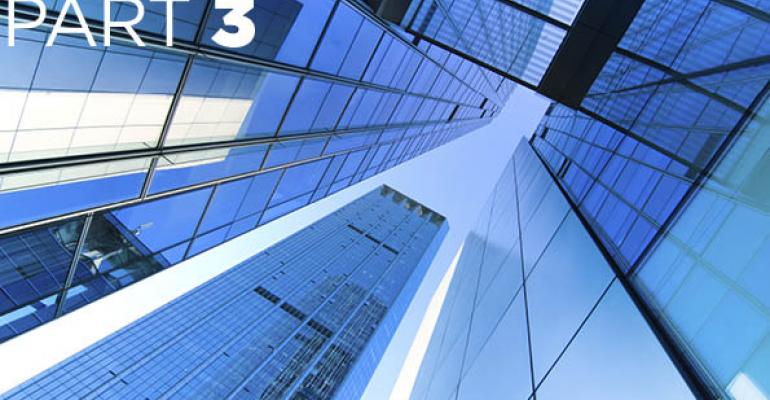Limited development activity has helped the market continue to absorb its excess supply of space and chip away at the still elevated vacancy rates. Annual construction activity has been hovering at about 0.5 percent as a percentage of new supply for the past three years, according to Reis. Last year, 28.4 million sq. ft. of new office space was constructed, and another 23.6 million sq. ft. has been built year-to-date through third quarter.
Specific to Southern California, many of the submarkets within the East San Fernando and West San Gabriel valleys have seen vacancies drop below 12 percent, according to Martin. Normally, that would spark the start of new construction. However, developers still face hurdles such as significant pre-leasing commitment requirements from lenders, rising construction costs and demand from apartment developers that has pushed land costs higher. As such, there is more focus on redeveloping or repurposing older office buildings. “We’re not seeing a lot of new office product, which is part of the reason why we are seeing the acceleration of the rental growth in our market,” he says.
More than half of survey respondents (57 percent) say that the current level of office development in their region is the right amount, while 16 percent said there is too little, 15 percent said there is too much and another 12 percent were unsure.
The lack of development has also been among the key trends contributing to Atlanta’s office market recovery, notes Davenport. “Unlike the last recovery cycles where millions of square feet went up, we don’t project that to happen in the next two to three years,” he says. The higher construction costs and the fact that rents couldn’t support new construction have kept a lid on development activity in Atlanta that is just now beginning to loosen.
However, there have been two new office projects recently announced in Atlanta. Tishman Speyer has kicked off its Three Alliance Center project, which is a 500,000-sq.-ft. speculative project in Buckhead. In the northwest suburbs, Highwood Properties Inc. has started construction on a 350,000-sq.-ft. building in the Cumberland Galleria that is 75 percent pre-leased to three tenants. That project is notable in that the tenants were willing to pay $10 per sq. ft. above current class-A rents for that particular submarket, says Davenport. “We have seen very little of that new development in Atlanta, and because of that, vacancy rates have dropped,” he says.
Yet, in other markets, development appears to have gotten out ahead of a still shaky recovery. In Washington, D.C. there is some 3.8 million sq. ft. of new product in the pipeline, with only 25 percent of that space pre-leased. That construction was sparked in part by demand from some big law firms that were shopping for more modern office space. “There has been demand, but it is a very small percentage of the market in my opinion,” says Matthew Levin, SIOR, a principal at West, Lane & Schlager Realty Advisors LLC in Washington, D.C. “So I think it is going to be a long road to lease out the remainder of that,” he says.
Although Washington D.C. represents one of the tightest office markets in the country with mid-year vacancies at about 12 percent, it is still very much a tenant’s market, notes Levin. “We’re seeing a ton of deals with a lot of velocity of transactions, but from an empirical data perspective, the numbers aren’t great,” says Levin. At mid-year, absorption in the Washington D.C. metro was negative 100,000 sq. ft. Part of that is due to the fact that tenants are still shrinking footprints as they look to use space more efficiently.
Although rents are relatively stable, concessions in Washington, D.C. are back at the highest levels they have been since the recession at 20 percent as a percentage of rents, says Levin. For example, tenants that are looking for more than 10,000 sq. ft. are finding generous tenant improvement packages and free rent. “I think landlords are going to be slugging it out, particularly in the markets that are newer, like near the new baseball stadium, which is the Southeast Waterfront and the Southwest Waterfront that are seeing a lot of new construction,” he says.

